Reading time: 9min 35 sec
I know all the parents out there will agree on one thing when I ask them: what they want to fix about kids' habits nowadays. And that's getting them away from those screens! It's tough, I get it.
It's no secret that children spend more time glued to their devices in today's digital age than ever. And while technology certainly has its benefits, it's necessary to make sure our kids get the physical activity they need to thrive.
As a gymnastics trainer, I've seen the power of physical activity in keeping kids engaged, active, and away from those pesky screens.
That's why I've compiled this list of the ten best gymnastic routines for your kids that we do in our gymnastic classes. These routines keep them active and healthy, fostering essential skills like balance, coordination, and strength. They're a gateway to a healthier, more active lifestyle for your little ones.
Whether your child is a budding gymnast or simply looking for a fun way to stay fit, these routines are bound to keep them on their toes – quite literally!
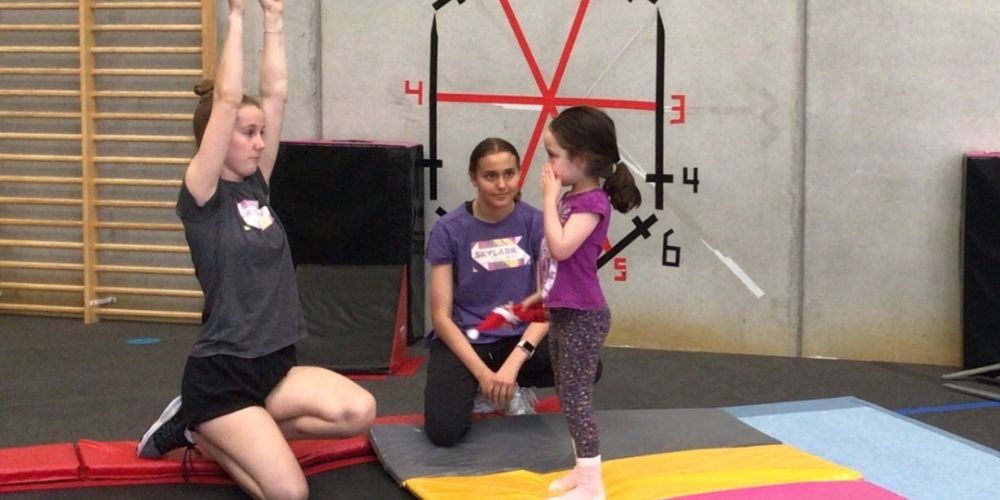
As a parent, being concerned about your child's screen time is natural. According to an Australian Institute of Family Studies article,
" Most Australian children spend more time on screens than is recommended. Estimates from primary research suggest only 17–23% of preschoolers and 15% of 5–12-year-olds meet screen-time guidelines. Screen time has also increased between 10 and 14, especially among boys. The increased screen-time types were electronic gaming for boys and TV, computer use and social networking for girls."
Excessive screen time has clear negative impacts on our children, and I understand that every parent can see these effects.
Some of these that I would personally witness at home are:
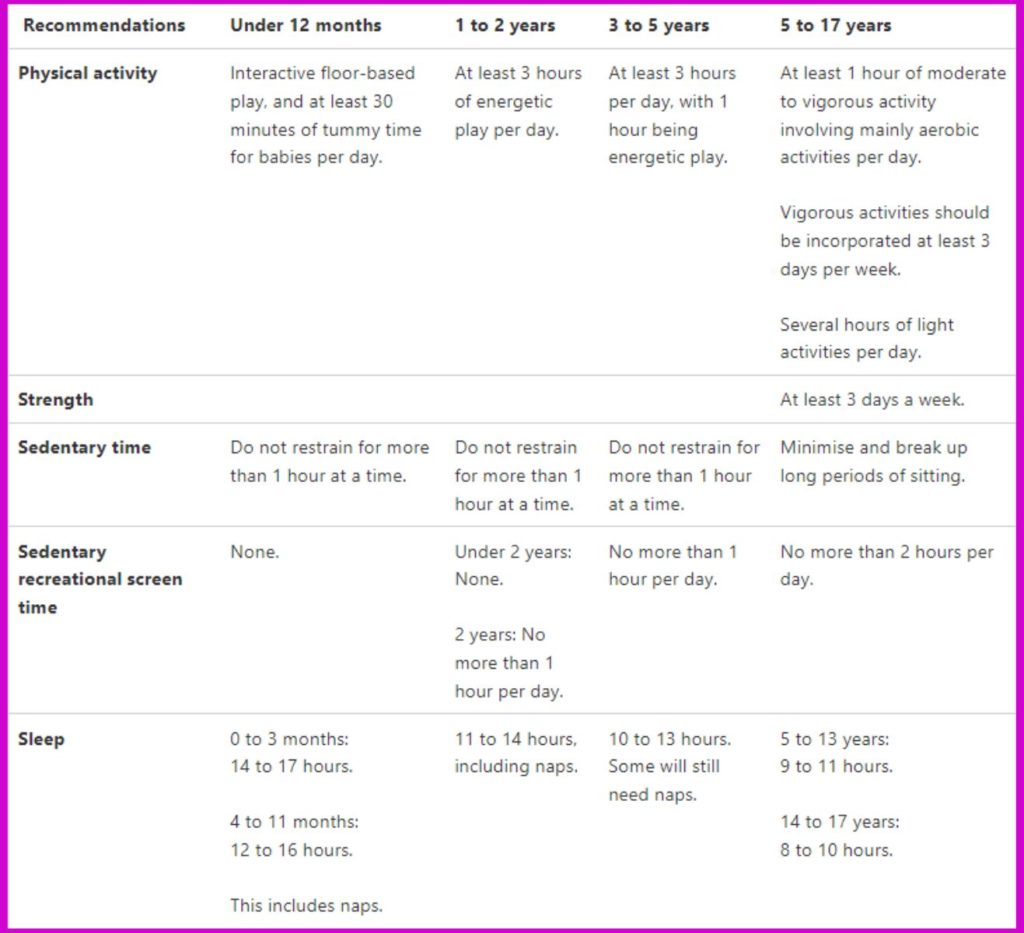
Have you heard of the 24-hour movement?
It's nice to know that the Australian government recognizes the importance of physical activity, sleep, and sedentary behaviour through the 24-hour movement guidelines. These guidelines emphasize the need for children and adolescents to balance physical activity, sedentary behaviour (such as screen time), and sleep for optimal health and well-being.
In fact, according to these guidelines, children aged 5 to 12 years should accumulate at least 60 minutes of moderate to vigorous physical activity every day while minimizing sedentary activities like screen time. Additionally, they should aim for 9 to 11 hours of uninterrupted sleep per night.
For adolescents aged 12 to 18, the guidelines recommend aiming for at least 60 minutes of moderate to vigorous physical activity daily, limiting sedentary behaviour, and aiming for 8 to 10 hours of sleep per night.
By following these guidelines and encouraging a healthy balance of physical activity, screen time, and sleep, we can support our children in leading active, healthy lifestyles.
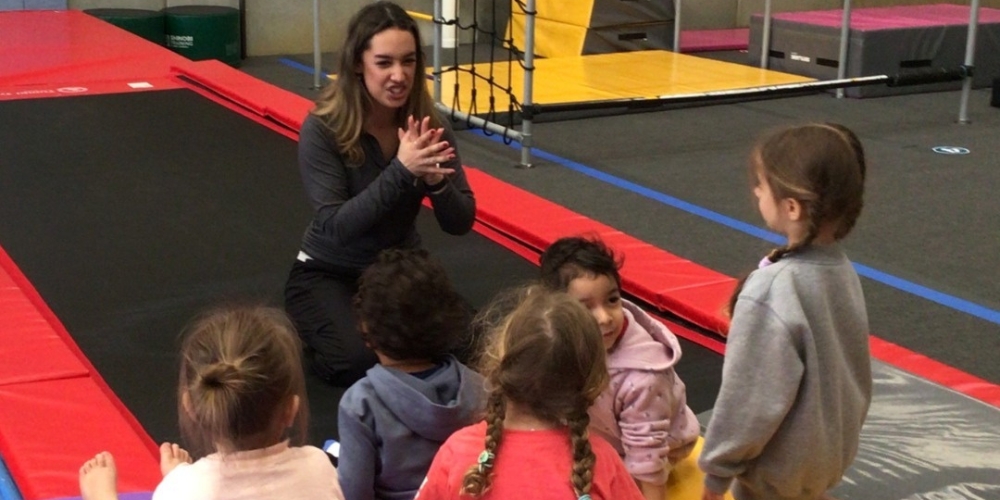
As a gymnastics instructor, I've witnessed countless benefits that gymnastics can bring to kids beyond just physical fitness. Here are seven key advantages:
Gymnastics isn't just about getting sweaty; it's about building a strong, resilient body from head to toe. I've watched kids transform their strength, flexibility, and stamina through gymnastics. From the little ones learning to hold a proper cartwheel to the older kids mastering complex routines, every achievement is a testament to their growing physical prowess. And the best part? They're having so much fun they don't even realize they're working out!
There's nothing quite like when a timid kid conquers their fears and shines on the gymnastics floor. I'll never forget the first time one of my students nailed a backflip after weeks of practice. The look of pure joy and pride on their face was priceless. Gymnastics has a magical way of boosting kids' self-esteem as they tackle new challenges and push their limits. Whether mastering a new skill or performing in front of a crowd, every accomplishment builds their confidence brick by brick.
Gymnastics classes aren't just about somersaults and handstands but also bustling hubs of friendship and camaraderie. I've seen kids form tight-knit bonds as they support and encourage each other through every twist and turn. Whether they're spotting each other during practice or cheering from the sidelines at competitions, gymnastics fosters a sense of community that extends far beyond the gym floor. Seeing these friendships blossom and grow with each passing class warms my heart.
Let's be real: gymnastics isn't for the faint of heart. It takes serious dedication and discipline to master those gravity-defying flips and twists. I've watched kids dig deep and push through fatigue and frustration to achieve their goals. Whether practising for hours on end or fine-tuning their technique with laser focus, gymnastics teaches them the importance of grit and determination. And when they finally nail that tricky routine? The sense of accomplishment is truly priceless.
Have you ever seen a gymnast effortlessly glide across the balance beam or stick a landing with pinpoint precision? Gymnastics isn't just about brute strength but finesse and control. I've seen kids develop incredible balance and coordination as they master the art of gymnastics. And the best part? These skills translate seamlessly to other sports and activities, giving them a competitive edge wherever they go.
From their first class, gymnastics teaches kids the importance of setting and working hard to achieve goals. I've seen kids light up with excitement as they inch closer to mastering a new skill or conquering a daunting routine. Whether aiming for a spot on the competition team or simply striving to improve their form, gymnastics gives them the tools to chase their dreams with confidence and determination.
Beyond the flips and tricks, gymnastics instills valuable life lessons beyond the gym floor. Kids learn resilience in the face of failure, perseverance in pursuing their goals, and time management as they juggle school, practice, and other commitments. These skills aren't just important for gymnastics; they're essential for success in all areas of life. As a gymnastics instructor, there's nothing more rewarding than watching my students grow into strong, confident individuals ready to take on the world, one cartwheel at a time.
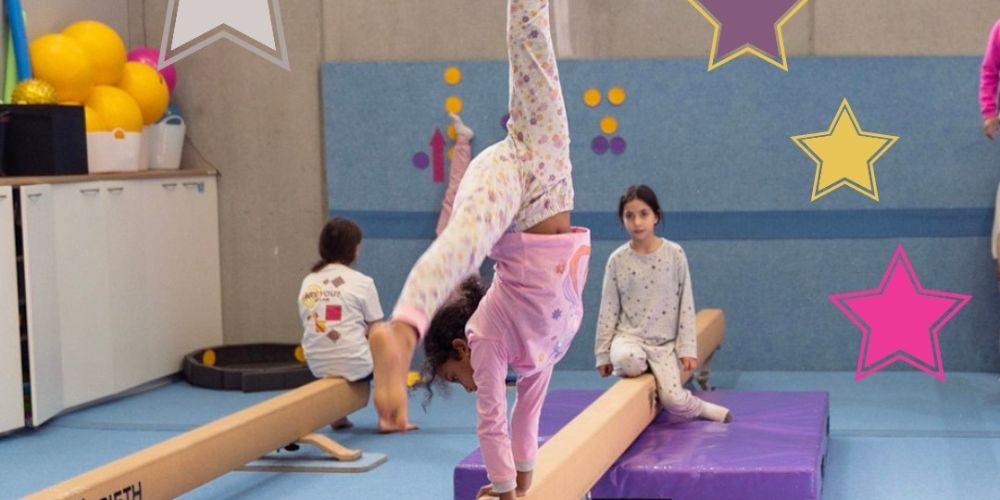
Okay, picture this: before we dive into all the cool flips and twists, we've got to get those muscles warmed up! It's like revving up a car before hitting the road. A good warm-up pumps blood loosens those stiff muscles and helps prevent nasty injuries. Plus, it gets the kids excited and ready to rock!
Who doesn't love rolling around like a human wheel? Forward rolls are not just fun – they're also super important for building coordination and body awareness. Plus, they're like a safety blanket for kids. If they ever take a tumble, they'll know how to roll out of it safely. It's all about learning to fall gracefully!
Cartwheels are like the bread and butter of gymnastics. They're all about grace, strength, and a lot of style. By breaking them down into steps, we're helping kids master the basics before they start adding their flair. It's all about building confidence, one step at a time!
Oh, the balance beam – every gymnast's best friend and worst nightmare! But seriously, walking on a narrow beam requires some serious focus and control. It's like walking a tightrope but way cooler. Plus, it's a great confidence booster once they conquer their fear of heights!
Swingin' from the bars like a monkey is every kid's dream. But it's not just fun and games – it's also building serious upper-body strength and coordination. Plus, there's something so satisfying about nailing that perfect rhythm and flying through the air like a superhero!
Now, this is where the real magic happens – the floor routine! It's like putting together a jumps, flips, and dance moves puzzle. Not only does it showcase their athleticism, but it also lets them express themselves and show off their personality. It's their time to shine!
Vaulting is all about power and precision. It's like launching yourself into the air and sticking the landing like a pro. But it's also about learning to trust your body and commit to the moment. Plus, who doesn't love the feeling of flying through the air?
Ah, the handstand – the ultimate test of strength and balance. It's like defying gravity and standing on your hands like it's no big deal. But it's also about building confidence and overcoming fear. Once they master the handstand, they'll feel like they can conquer anything!
Bouncing around on a trampoline is every kid's dream come true! But it's not just fun – it's also building some serious coordination and body awareness. Plus, it's a great way to burn off some energy and get those endorphins flowing!
And finally, we wrap it all up with a nice, relaxing cool-down stretch. It's like giving your muscles a big ol' hug after a hard day's work. Stretching helps prevent soreness or stiffness and keeps those muscles nice and limber. Plus, it's the perfect way to wind down and relax after a fun-filled gymnastics session!
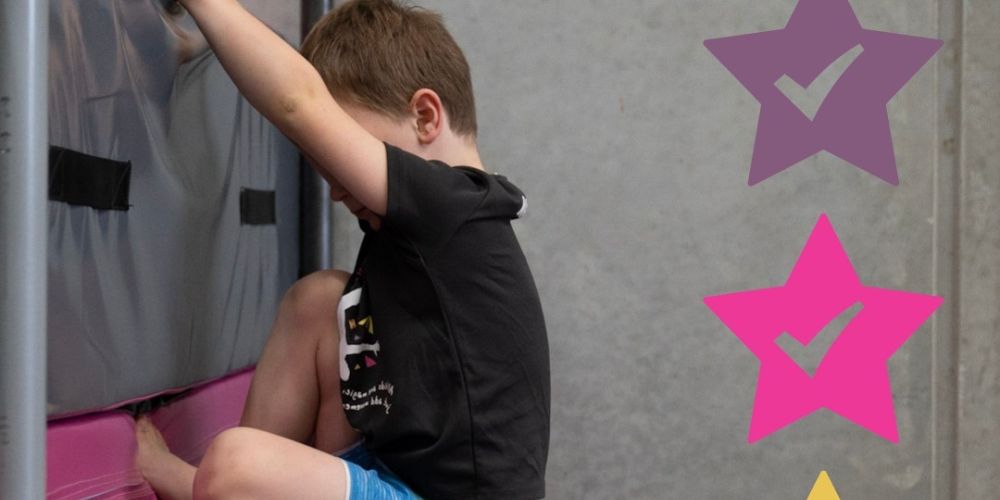
Start the day with a few gymnastics-inspired stretches. At home, we would start with reaching for the sky with arms, touching their toes to stretch their hamstrings and doing gentle twists to loosen up their spines. This helps wake up their muscles and prepares them for the day ahead.
Throughout the day, incorporate short bursts of gymnastics exercises as active breaks. Set a timer for every hour or so, and have kids do quick exercises like forward rolls, cartwheels, or jumping jacks to get their blood flowing and break up long periods of sitting.
Designate a specific time each day for "after-school gymnastics hour." During this time, kids can practice different gymnastic routines or skills they've learned, independently or with siblings. Make it a fun and interactive activity by playing upbeat music and setting up a makeshift gymnastics area in the living room or backyard.
Turn everyday chores into gymnastics-inspired activities. For example, have kids practice balance and coordination by walking across a "balance beam" made from a strip of masking tape on the floor while carrying a laundry basket. Or challenge them to do cartwheels or handstands while cleaning up their room. This is my favourite routine! Who would not want a helping hand while having fun, right?
Create games that incorporate gymnastics elements. For example, set up a scavenger hunt where kids must perform specific gymnastics skills at each location before moving on to the next clue. Or play "Simon Says" with gymnastics moves like jumps, rolls, and poses.
Dedicate one evening a week to family fitness night, focusing on gymnastics. Clear some space in the living room or basement and take turns leading each other through different gymnastics routines or exercises. It's fun to bond as a family while staying active and healthy.
Wind down at the end of the day with some calming gymnastics-inspired stretches. Encourage kids to do gentle stretches like butterfly stretches for their hips, cat-cow stretches for their spine, and child's pose for relaxation. This helps release tension from the day and prepares their bodies for a restful night's sleep.
While gymnastics primarily focuses on physical development, it can indirectly benefit academic performance by promoting discipline, focus, and time management skills. Regular physical activity has also improved cognitive function and academic achievement.
Many gymnastics programs offer inclusive classes or adaptations for children with disabilities. These programs promote participation, skill development, and confidence in a supportive and accommodating environment. Contact local gymnastics facilities or organizations specializing in adaptive sports for more information.
Encourage your child to set personal goals, celebrate achievements, and maintain a positive attitude towards challenges and setbacks. Provide support and encouragement and allow them to take ownership of their gymnastics journey and pursue their passions within the sport.
It's common for children to experience fear or anxiety when learning new gymnastics skills. Encourage open communication with your child to understand their concerns and provide reassurance and support. Break down the skill into smaller, manageable steps and gradually build their confidence through repetition and positive reinforcement. Consider seeking guidance from a qualified gymnastics coach or sports psychologist if needed.
Alright, we've covered a lot of ground discussing how to weave gymnastics into your child's daily life. From backyard adventures to family challenges and everything in between, there's no shortage of ways to keep those little ones flipping, twisting, and tumbling away from screens. Remember, it's not just about mastering skills; it's about fostering a love for movement, creativity, and healthy living.
So, whether you're setting up an obstacle course in the living room or transforming your backyard into a gymnastics arena, have fun, stay safe, and let those kiddos shine like the little gymnastic stars they are! Here's to many more days filled with laughter, learning, and boundless energy. Keep those bodies moving, and you might discover the next Olympic champion right in your home!
Now that you finally realise that you or your kid is into gymnastics, how do you start?
Well, of course. Let's start with the basics! It would help if you prepared a few things for the exciting journey ahead in gymnastics. So, what essentials will set you on a fantastic start?
Let's find out!
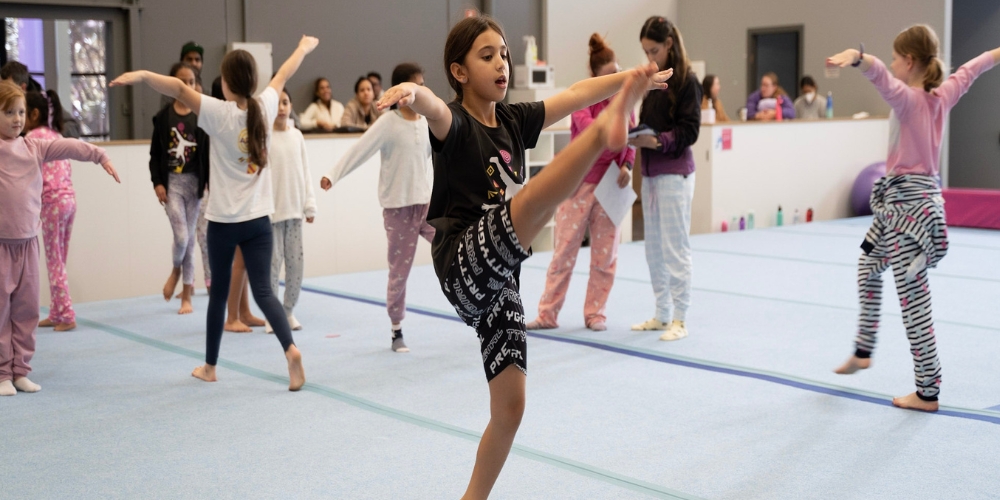
The most important piece of equipment for any gymnast is a gymnastics mat. Stretches, floor routines, and tumbling passes may be performed safely and supportively on this padded surface. By acting as a barrier, the mat lessens the force on joints and lowers the possibility of injury during landings. Ensure the gymnastics mat you choose fits your training programme's unique requirements by considering thickness, durability, and size. A premium mat is a must to create a safe and cosy space that promotes skill development and injury prevention.
The leotard is more than a costume; it represents the focus and discipline essential to gymnastics. With its one-piece design, this outfit maximises the range of motion, making it easier to perform complicated routines with elegance and grace. In addition to improving a gymnast's flexibility, a well-fitting leotard adds to the sport's visual attractiveness. In addition to its practical advantages, donning a leotard during practice and competitions instils a mindset of dedication and commitment to the artistic quality of gymnastics.
Gymnasts performing bar exercises need gymnastics grips for hand protection. These grips, usually made of leather, improve bar traction and protect against calluses and blisters. Selecting the appropriate grips is essential because they allow gymnasts to confidently and controllably execute complex routines on uneven, parallel, and high bars. Gymnastics grips are essential for improving technical proficiency on a variety of apparatuses and for enhancing safety during training.
In gymnastics, chalk is an essential item for keeping a firm hold. Chalk is a moisture-absorbing substance applied to the hands and occasionally other body parts. It ensures a dry surface and lowers the risk of slipping when performing exercises on bars, rings, and other equipment. Beyond its usefulness, the gymnastics ritual of chalking up symbolises focus and preparedness and is deeply embedded in the culture. A gymnast with sufficient chalking can perform complex movements, swings, and dismounts with assurance and accuracy.
See our blog about "What do gymnasts put on their hands?" to learn more about chalk.
Staying hydrated is crucial in gymnastics, where physical effort is high and ongoing. A water bottle is an essential training session since it offers a convenient and quick way to stay hydrated. Regular water consumption promotes overall performance, helps sustain energy levels, and facilitates healing. Selecting a water bottle that is both spill-proof and conveniently located guarantees that staying hydrated becomes an integrated aspect of the gymnastics routine, enhancing endurance and overall health.
Resistance bands are versatile tools that give gymnastics training additional complexity. Because they offer varying resistance, these elastic bands are perfect for focused muscle engagement, flexibility exercises, and strength training. Resistance band training increases muscular tone, general strength, and body control. Resistance bands provide a dynamic and efficient approach to supplement traditional gymnastics training, from warm-up drills to specific sessions, helping to develop a resilient and well-rounded athlete.
A video recording gadget, such as a camera or smartphone, is a great tool for gymnasts who want to improve. Athletes can identify areas for improvement and refinement in their form, technique, and performance by reviewing their recorded practice sessions. Self-evaluation is made possible by the playback feature, which also offers insights that might not be seen during the real routine. This tool takes on the role of a coach's eye, supporting the growth of muscle memory, skill improvement, and the pursuit of gymnastics perfection. Frequent video analysis becomes essential to training, encouraging a proactive attitude towards skill development and ongoing self-improvement.
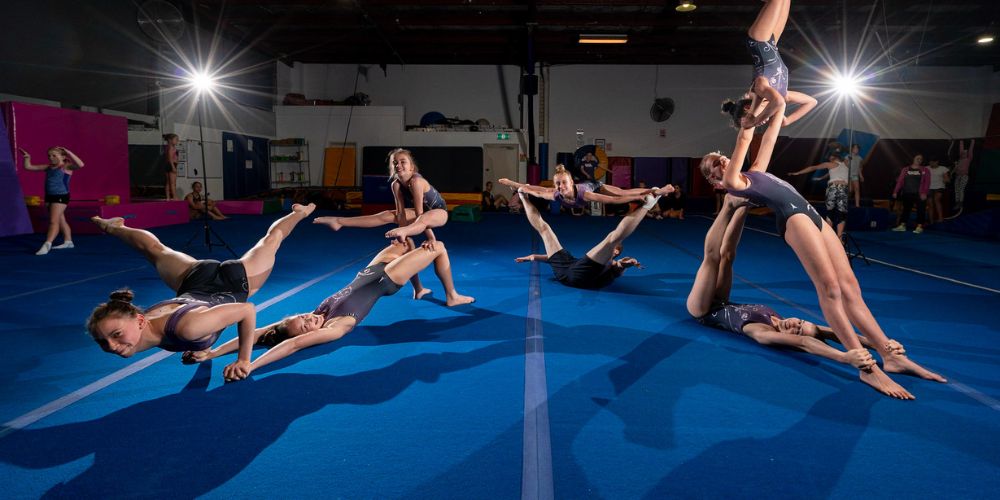
Taking up gymnastics is a fascinating endeavour that blends discipline, artistry, and athleticism. Enough preparation is essential for a successful start, whether you're a newbie excited to explore the world of flips and tumbles or someone returning to gymnastics after a break. These seven-pointers will help you feel more prepared and confident as you enter the exciting and dynamic gymnastics world.
The first thing you should do while starting gymnastics is to locate the ideal facility. Investigate nearby gymnasiums, read reviews, and consider elements like the calibre of the coaching staff and the equipment. You can assess the atmosphere and choose where to start your gymnastics journey by visiting the facility in advance.
Learning the basic terms and ideas of gymnastics will help you feel more at ease when you begin to train. You can follow directions and participate completely in your training sessions if you are familiar with the fundamentals of each apparatus and common exercises.
The appropriate clothes directly impact your performance and are not just for show. Purchasing a leotard that fits properly guarantees comfort and range of motion. It will assist to be aware of the gym's attire policy and any equipment needs so that you can show up ready for every session.
Certain gymnasiums may require personal equipment, such as grips or certain shoes. Ensuring you have everything you need for a smooth and pleasurable training session is best achieved by checking in with your coach or the gym administration.
Prioritising strength and flexibility training is wise before beginning official gymnastics training. Strengthening and stretching activities can help your body better prepare for the demands of gymnastics. Please include them in your workout plan.
Learning the fundamentals of gymnastics at home prepares you for a more seamless transition to formal instruction. Simple movements like handstands and forward rolls can be practised to help develop confidence and familiarity with the fundamentals of the sport.
Starting with introductory gymnastics courses is a disciplined and encouraging way to start. These courses are meant to gently educate beginners about the sport while emphasising the fundamental abilities and methods. Starting with these classes will guarantee that you have a firm grasp of the foundations and that your gymnastics journey gets off to a good start.
Since not all classes include warm-ups, the teacher might assume that your child has warmed up in advance. The best preparation you or your child can do if you arrive early is to stretch as you wait for the lesson. Their body will be ready for whatever the day has in store for them in this way.
Absolutely! Many gymnastics programs cater specifically to adults. Classes are designed to accommodate various skill levels and age groups, whether you're a complete beginner or returning to the sport.
No, gymnastics is for everyone, not just those interested in competition. Many people participate in gymnastics for fitness, fun, and skill development. Whether you have aspirations of competing or want to enjoy the physical and mental benefits, there's a place for you in gymnastics.
The frequency of practice depends on individual goals, schedules, and fitness levels. Starting with one to two classes per week is common for beginners. Consistency is more important than frequency; gradual progression prevents injuries.
Entering the world of gymnastics is a thrilling adventure full of opportunities. From knowing the necessary equipment to mastering the fundamental motions, you're ready for an experience that blends power, elegance, and fun. Therefore, enjoy the learning process and recognise and appreciate every accomplishment, no matter how tiny, whether you're flipping bars or honing your balance on the beam.
Now, it's your turn! Take that leap, sign up for a class, and let the mats be your playground. Remember, the journey is just as exciting as the destination, and every twist, turn, and tumble brings you one step closer to mastering the art of gymnastics. So, what are you waiting for? Grab your leotard, chalk up those hands, and let the gymnastics adventure begin! See you on the mat!
Picture this: your daughter, with her eyes sparkling with determination, and your son, full of energy and curiosity, both fascinated by the flips, tumbles, and seemingly gravity-defying routines of gymnasts they watch on TV.
You can't help but wonder, can they benefit from the same training routines? Are there fundamental differences in how boys and girls approach gymnastics? And if so, how do these differences influence their training, goals, and overall experience in the sport?
I got it. As a parent, you want the best for your kids. Suppose they both have a passion for gymnastics. In that case, it's only reasonable to question if boys and girls approach the sport differently.
I understand your curiosity because I've been there, exploring the details to guarantee that every child in our gymnastics programs gets the most out of their chosen passions.
Gymnastics has not always exclusively been a male or female sport. Both men and women performed exercises and routines stressing total fitness and flexibility. However, as the sport developed and received widespread acclaim, it became clear that male and female competitors varied physiologically. Due to these distinctions, there are now separate male and female competitive divisions, each with a distinct set of equipment and routines catered to the individual strengths of the competitors.
So, flexibility is the name of the game when it comes to girl's gymnastics! Have you ever wondered how they do those splits and high kicks with such ease? Their extraordinary hip flexibility, which enables them to bend and twist in ways that look almost superhuman, is entirely responsible. This flexibility isn't just for show; it's necessary to master the risky balance beam routines and the gravity-defying floor flips.
It all comes down to upper body strength when we shift our focus to boys' gymnastics. These guys are like human powerhouses! Arm, shoulder, and core strength are essential for their exercises on the rings and parallel bars. Just imagine holding your body parallel to the ground while balancing on the rings; it's incredible! Their high bar routines, where they swing, release, and catch with jaw-dropping precision, benefit from this strength.
The apparatus, the beating heart of gymnastics! Girls get to master the balance beam, a constricting, punishing strip that tests their physical prowess and mental concentration. Then there are the uneven bars, which swing effortlessly from bar to bar while defying gravity. The floor exercise is a canvas on which they can artistically display their dance routines and tumbling passes.
On the boys' side, there's the pommel horse, a difficult sport involving strength and balance. Imagine these men maneuvering quickly around a leather-covered device with handles to demonstrate their abilities. Then there are the rings, where they execute mind-blowing stunts while hung extremely high in the air. Additionally, they soar and twist while catching the high bar with split-second timing.
Gymnastics routines for girls are like a beautiful dance on the floor. They captivate the audience with grace and style as they blend beautiful leaps, strong tumbling, and complicated dance moves. Balance and fluidity are essential, especially on the beam, where one wrong move can disrupt the delicate balance.
For boys, it's all about displaying their strength and control. They'll show off their daring releases and re-catches with powerful swings on the high bar. They hold gravity-defying positions on the rings, exhibiting their incredible upper body power, not to mention the vault, where both power and finesse are required for a successful landing.
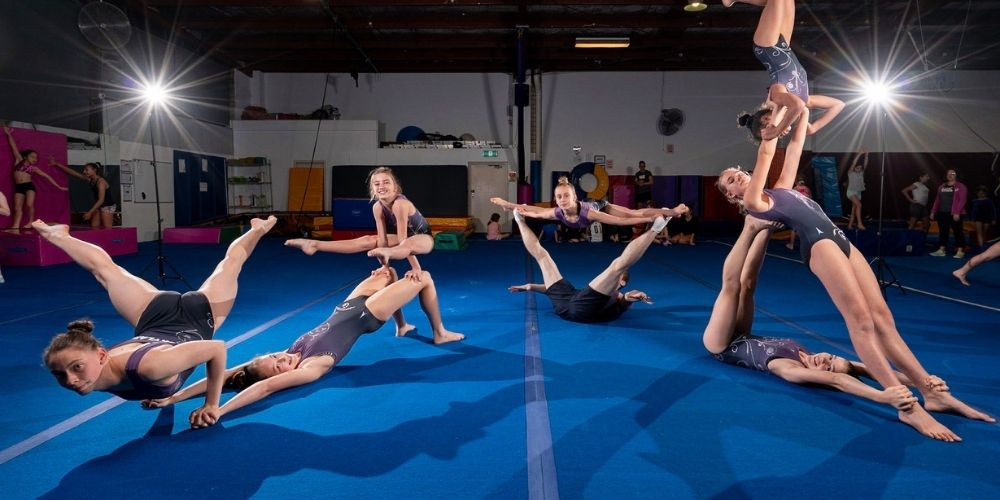
The floor routines of boys are distinguished by powerful tumbling passes that include flips, twists, and somersaults. Their workouts frequently emphasize strength and dynamic movements, demonstrating explosive athleticism. You'll see outstanding acrobatic components combined to demonstrate strength and agility.
Boys perform complicated circular moves with their legs extended on the pommel horse. This event needs extraordinary core strength, balance, and coordination. Their performances include quick and accurate swings that showcase their control and precision.
The rings event highlights male gymnasts' upper body strength. They execute a series of static strength holds as well as swinging aspects. The routines frequently feature eye-catching strength maneuvers that demonstrate their remarkable power and stability, such as the iron and inverted cross.
Boys do powerful jumps and twist off the apparatus in the vault event, aiming for height, distance, and precise landings. The vault necessitates a combination of speed, strength, and precision.
Both competitions include swinging aspects, releases, and complicated grips. Boys demonstrate courage and coordination by performing daring releases and grasps on the high bar. Swinging movements and difficult transitions emphasize power and fluidity in parallel bar exercises.
Girls, like males, complete vault routines, including dashing down the runway and flips and twists before landing. While the underlying premise remains the same, the emphasis for girls is on grace, form, height, and distance.
Uneven bars routines for girls include swinging elements, releases, and intricate transitions between the high and low bars. The routines emphasize agility, precision, and elegance. Look out for beautiful pirouettes and high-flying releases requiring precise timing and control.
The balancing beam routine tests a girl's balance, flexibility, and confidence. On the thin beam, the girls perform a combination of acrobatic elements, dance movements, and turns. Precision and grace are essential while doing flips, leaps, and spins with poise and control.
Floor routines for girls are an enthralling blend of forceful tumbling, expressive dance, and aesthetic choreography. They combine powerful flips and leaps with exquisite dance techniques to communicate emotions and tales via their shows. Their floor performances rely heavily on artistry and musicality.
Encouraging young gymnasts, regardless of gender, fosters their passion, builds confidence, and nurtures a positive attitude towards the sport.
Here are some ways we can support and inspire our budding gymnasts:
Gender should never limit your child's dreams regarding gymnastics. Encourage your child, whether he or she is a boy or a girl, to embrace gymnastics with the same zeal. Make sure that they have equal access to training and opportunity. Break down those gender barriers and show them that their passion is unlimited.
It is up to us to break down those stereotypes! Encourage your child to recognize the strengths of both male and female gymnasts. Girls can enjoy the grace in males' routines, and guys can appreciate the strength in girls' performances. Let us show them that talent does not have a gender in gymnastics.
Isn't every child unique? Celebrate your child's abilities, whether displayed in powerful floor routines or exquisite balancing beam performances. Remind them that these abilities are about personal dedication rather than gender. Allow children to explore all areas of gymnastics and cherish what makes them unique.
Respect is essential, people! Please encourage your child to respect their teammates, coaches, and all other gymnastics participants, regardless of gender. Teach children to recognize their gym companions' different talents. It is about instilling a sense of belonging and respect in everyone.
Boost their self-esteem! Remind your child that their gender does not define them. Encourage children to have great dreams, to create goals, and to work hard to attain them. Your confidence in their ability will motivate them to overcome obstacles and shine in their gymnastics career.
Parents set a good example! Show them the way by being respectful and fair to everyone. Discuss the importance of gender equality with them. Allow them to see your dedication to making the world a more inclusive place, not just in gymnastics but in everything they do. Your deeds will speak louder than words and motivate them to become equality advocates.
The balance beam was designed specifically for women. It was never intended for males. One distinguishing element of a beam is that no upper body strength is required. Whereas all men's events demand upper body strength, most of them (bars, rings, high bar, pommel horse) require it 100% of the time.
Low body weight and fat mass are vital for gymnastics regardless of discipline. Many gymnasts pursue low-calorie diets and other hazardous weight-control measures to pursue the perfect body weight or shape.
Encourage open conversation with coaches and inquire about their gender equality policy. Ensure that your child, regardless of gender, gets equal access to opportunities and training.
Men's artistic gymnastics can be pursued at any age, from primary school through adulthood, even if this is your first time doing something like this. You'll begin by learning key skills and the fundamentals of the six activities (the floor, pommel horse, rings, vault, parallel bars, and high bar).
In the exciting world of kids' gymnastics, everyone can play, learn, and shine, whether boys or girls. As parents and as their second guardians in the gym, our job is to support our little gymnasts in following their dreams without any limits.
We can help our children by talking openly about gymnastics, supporting them no matter their gender, and encouraging them to be proud of what they achieve. Every flip and every routine they practice is a step toward their goals, and our love and encouragement make all the difference.
Remember, it's about more than just gymnastics—it's about teaching our kids that they can do anything they set their minds to, no matter who they are. Let's stand by their side, cheer them on, and show them that there's a place for everyone in this big, exciting world to shine.
If you're considering enrolling your child in a gymnastics program at Skylark Sports, you may be wondering how to choose the right class. With so many options available, it can be overwhelming to decide which program is the best fit for your child. Here, we'll provide you with a step-by-step guide to help you choose the perfect gymnastics class for your child.
(more…)November already!
As we slide into the final months of 2022 we wanted to update our Skylark families on what’s happening in the gym, celebrate some fantastic achievements and share some community initiatives we would love you to take part in.
(more…)This week we celebrate coach Jack, who has completed his training and is now our newest qualified coach! Coaches at Skylark complete the Skylark Coach in Training Program alongside the National Gymnastics Australia coaching qualification, ensuring your kids are in great hands.
(more…)What is it that makes some people more successful than others? Are they just born gifted with talent? Are they luckier than other people? Or maybe, it’s the way that they think…
Looking for a fun activity you can do with your toddler that builds their brains and helps them with their gymnastics? Then look no further than Animal Walks! Animal Walks is an activity that helps promote vestibular processing, engages the imagination and is lots of fun!
Competition season has arrived and with any performance sport, it can be hard to know what the judges are looking for. To help you navigate the scoring system we’ve created this list of 5 things you need to know about how acro routines are judged.